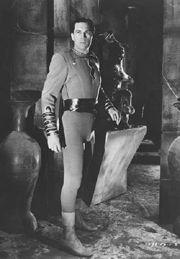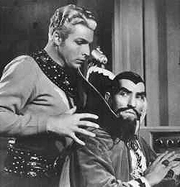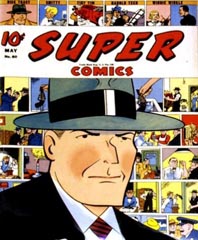DENNIS O’NEIL: One Upon A Time
 Once upon a time, way back, I was just a tiny bit afraid that the stepchild of American publishing wherein I labored, comics, would not be properly documented – that the right people weren’t being interviewed, the right information preserved. I needn’t have worried. Thanks largely to an army of scholars-without-portfolios – we called them fans – I think comics are likely to be the best documented art form in history. These people, and more recently the academics that involve themselves with popular culture, must have found sources of information completely unknown to me, and I applaud them for it.
Once upon a time, way back, I was just a tiny bit afraid that the stepchild of American publishing wherein I labored, comics, would not be properly documented – that the right people weren’t being interviewed, the right information preserved. I needn’t have worried. Thanks largely to an army of scholars-without-portfolios – we called them fans – I think comics are likely to be the best documented art form in history. These people, and more recently the academics that involve themselves with popular culture, must have found sources of information completely unknown to me, and I applaud them for it.
Among my current sprinkling of projects is writing introductions for a collection of essays concerning what I guess we can unblushingly call the Batman mythos. More documentation and, I’d like to believe, welcome. The next intro I’ll do will be for a piece by Paul Lytle on Arkham Asylum. That name – Arkham Asylum – is familiar to Batman devotees and maybe to some folk not quite so devoted because it played a prominent part in the last mega-budget Batman movie. It is, for you who are not devotees and those who weren’t paying attention while you watched Batman Begins, the place where the criminally insane of Batman’s rollicking home town, Gotham City, are sent for incarceration and rehabilitation though, judging from results, the staff of the institution aren’t very good at either task.
But – here comes our big reveal, and I’m mostly addressing devotees, though the rest of you can stay – have you ever wondered where that distinctive name came from? Oh sure, the better read among you will recognize the word “Arkham” from H.P. Lovecraft’s tales – Arkham was the spooky burg where Lovecraft’s things went bump in the night. But who had the inspiration to associate it with the residence of Gotham’s host of loonies? I was pretty sure I knew, but, as you may remember, a couple of columns ago I trusted my memory and erred. So I sent an email. Here, in part, is the reply:
The JCH that signs the letter stands for Jack C. Harris, a veteran writer, editor, historian and, for the past decade, give or take, a comics writing teacher at the School of Visual Arts in lower Manhattan. Credit where it’s due – where it’s long overdue.
If Jack were here, I’d ask him to take a bow.
RECOMMENDED READING: Awareness, by Anthony de Mello. Those of you who look at this blather every week may have guessed that I’m not a huge fan of organized religion these days, largely because of the misuses to which it’s currently being put, and the book recommended above is by a Jesuit. Well, if the Jebbies who presided over my university years were like de Mello, I might lay some bucks on the alumni fund once in a while.
Dennis O’Neil is an award-winning editor and writer of comic books like Batman, The Question, Iron Man, Green Lantern and/or Green Arrow, and The Shadow, as well as all kinds of novels, stories and articles.


 Saturday noon, and it still hadn’t arrived. Voldemort’s work? Or the machinations of something a bit more prosaic – book ninjas, maybe, or gremlins? But no. We fretted in vain. At about three, the doorbell rang, and there he was – Mr. Delivery Man, bearing our own copy of Harry Potter and the Deathly Hallows.
Saturday noon, and it still hadn’t arrived. Voldemort’s work? Or the machinations of something a bit more prosaic – book ninjas, maybe, or gremlins? But no. We fretted in vain. At about three, the doorbell rang, and there he was – Mr. Delivery Man, bearing our own copy of Harry Potter and the Deathly Hallows. At the end of last week’s exciting episode, the cute schoolteacher and I were involved in a tense debate about which showing of the new Harry Potter movie we would attend. (Yes, we media people do have lives that throb with excitement.)
At the end of last week’s exciting episode, the cute schoolteacher and I were involved in a tense debate about which showing of the new Harry Potter movie we would attend. (Yes, we media people do have lives that throb with excitement.) Here it is Tuesday evening and we’re still debating. Should we go to the 11:59 showing of the new Harry Potter flick at the local 21-plex or catch one of the early showings in the morning? Pros and cons on both sides. But we will see the movie within the next 24 hours; count on it.
Here it is Tuesday evening and we’re still debating. Should we go to the 11:59 showing of the new Harry Potter flick at the local 21-plex or catch one of the early showings in the morning? Pros and cons on both sides. But we will see the movie within the next 24 hours; count on it. Last week, we were discussing the cons of continued stories, specifically what’s wrong with them, and we posited that they have a major problem in the difficulty new readers (or audiences) have in understanding the plot and characters. I said that there were remedies for this problem and now I’ll suggest, a bit timidly, that though remedies exist, nothing is foolproof.
Last week, we were discussing the cons of continued stories, specifically what’s wrong with them, and we posited that they have a major problem in the difficulty new readers (or audiences) have in understanding the plot and characters. I said that there were remedies for this problem and now I’ll suggest, a bit timidly, that though remedies exist, nothing is foolproof. In last week’s installment of what some of you may be beginning to think is an endless blather, when I was discussing movie serials I neglected to mention that serials were among the first non-comics forms to use superheroes. During that decade, lucky young popcorn eaters could see Superman, Batman, Captain America and, in my opinion the best of them all, Captain Marvel in the continued chapter plays that were a staple of Saturday matinees. (That probably doesn’t exhaust the list, but memory is not my greatest gift… At least I don’t think so…) Having seen some of the above-mentioned entertainments, and having, within the past two weeks, seen the Spider-Man and Fantastic Four movies, I realize that the serial makers were born too soon.
In last week’s installment of what some of you may be beginning to think is an endless blather, when I was discussing movie serials I neglected to mention that serials were among the first non-comics forms to use superheroes. During that decade, lucky young popcorn eaters could see Superman, Batman, Captain America and, in my opinion the best of them all, Captain Marvel in the continued chapter plays that were a staple of Saturday matinees. (That probably doesn’t exhaust the list, but memory is not my greatest gift… At least I don’t think so…) Having seen some of the above-mentioned entertainments, and having, within the past two weeks, seen the Spider-Man and Fantastic Four movies, I realize that the serial makers were born too soon. Consider the preceding two paragraphs a digression, please. And now we return to our regularly scheduled topic –
Consider the preceding two paragraphs a digression, please. And now we return to our regularly scheduled topic – Now, where were we…?
Now, where were we…? If you have ever suffered through one of my comics writing classes, or were lucky enough to take a Robert McKee film writing course, you know that some professional wordsmiths set a lot of store by structure, and that the most reliable structure is called the three act structure. (For more, and better, on this, see the recommended reading below.) I’m not about to presume to teach a class here, but most briefly – the three-act structure: 1, Something happens to cause the hero to act. 2. The problem gets complicated. 3. The hero resolves the problem.
If you have ever suffered through one of my comics writing classes, or were lucky enough to take a Robert McKee film writing course, you know that some professional wordsmiths set a lot of store by structure, and that the most reliable structure is called the three act structure. (For more, and better, on this, see the recommended reading below.) I’m not about to presume to teach a class here, but most briefly – the three-act structure: 1, Something happens to cause the hero to act. 2. The problem gets complicated. 3. The hero resolves the problem. (If) you’re…young; you don’t remember a time when continued stories were rare. But until Stan Lee made them standard procedure at Marvel in the 1960s, they were next to unheard-of.
(If) you’re…young; you don’t remember a time when continued stories were rare. But until Stan Lee made them standard procedure at Marvel in the 1960s, they were next to unheard-of. Which brings us to the pulp magazines, a publishing form that began about 1910 and was one with the dinosaurs by the middle 50s. A lot of these cheaply produced entertainments featured continuing heroes. (We’ve discussed perhaps the greatest of them, The Shadow, in this department
Which brings us to the pulp magazines, a publishing form that began about 1910 and was one with the dinosaurs by the middle 50s. A lot of these cheaply produced entertainments featured continuing heroes. (We’ve discussed perhaps the greatest of them, The Shadow, in this department 
 When we’re in a somber mood, which is an easy kind of mood to be in these days, we hope that Jerry Siegel and Joe Shuster were not prophets. Joe and Jerry were, of course, the creators of Superman, and way back in 1938 they told what’s become known as Superman’s origin story.
When we’re in a somber mood, which is an easy kind of mood to be in these days, we hope that Jerry Siegel and Joe Shuster were not prophets. Joe and Jerry were, of course, the creators of Superman, and way back in 1938 they told what’s become known as Superman’s origin story. All hail to thee, Pulpus. Praised be thy name.
All hail to thee, Pulpus. Praised be thy name.








